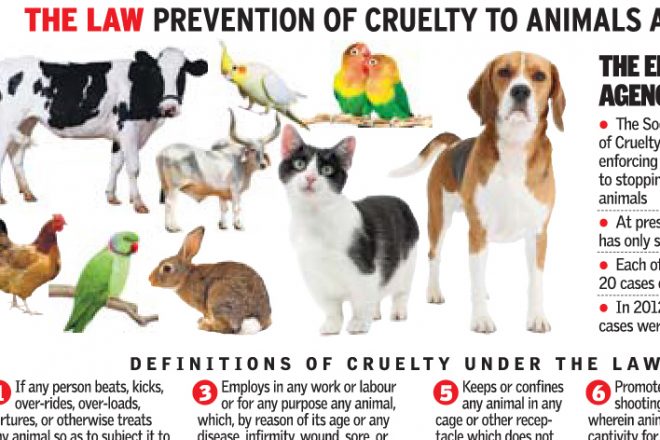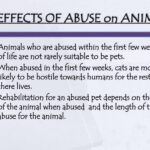In the bustling milieu of urban life, a disturbing reality often lurks beneath the surface—a reality where animals can become silent victims of pervasive cruelty. While the frenetic pace of city living can create a veneer of progress and sophistication, it simultaneously harbors numerous manifestations of animal abuse. Understanding these forms of cruelty is essential, not just for advocating for animal welfare, but also for fostering a culture of compassion and responsibility within communities.
The most common forms of animal cruelty in urban settings can be cataloged into several categories: neglect, physical abuse, exploitation for profit, and abandonment. Each type is characterized by its unique nuances, yet all share a common thread—the disregard for the intrinsic value of animal life.
Neglect: Often thought of as the subtle villain in the narrative of animal cruelty, neglect can manifest in various insidious ways. In urban environments, animals left in the care of humans sometimes suffer from a lack of basic necessities such as food, water, and shelter. Stray animals, too, can fall prey to neglect; they roam the streets, often underweight and malnourished, searching for scraps in trash bins or beseeching passersby for a morsel of kindness. The urban landscape, with its cacophony of sounds and chaotic atmosphere, can exacerbate the plight of these vulnerable beings. Their needs are overshadowed by the fast-paced demands of city life, leading to despair that goes unnoticed by the bustling crowds.
Physical Abuse: The grim reality of physical abuse is a shocking facet of animal cruelty that continues to plague urban settings. Reports of dogs and cats subjected to beatings, torture, or other severe mistreatment highlight a profound moral failing within society. This type of cruelty often correlates with other societal issues, such as domestic violence, where abusers extend their violence toward innocents who cannot retaliate. The anonymity of city life can embolden individuals to act with impunity, believing they can escape the repercussions of their heinous actions. Education and awareness are vital to combat this horrific trend, as they cultivate a culture of vigilance and accountability among residents.
Exploitation for Profit: In urban landscapes, exploitation of animals is frequently most egregious in the context of profit-driven enterprises. Puppy mills and illegal breeding operations proliferate in the shadows, prioritizing monetary gain over the welfare of the creatures involved. These facilities often cram animals into deplorable conditions, devoid of proper veterinary care or humane treatment. Additionally, wildlife trafficking often finds its roots in crowded urban centers as exotic animals are illegally captured and sold in underground markets. These practices, fueled by consumer demand, contribute not only to the suffering of individual animals but also to the disruption of entire ecosystems. It prompts a collective responsibility to scrutinize the origins of pets and products, fostering ethical consumption practices among urban dwellers.
Abandonment: The phenomenon of abandonment has taken on a grim reality in urban settings. As families relocate or circumstances change, animals are often left behind, discarded like unwanted possessions. Shelters become inundated with an influx of these abandoned pets, straining resources and repeatedly highlighting a significant societal concern. The emotional toll on these animals is profound; they experience confusion, fear, and heartbreak as they are thrust into a situation far removed from their previous home life. In cities where the socio-economic landscape is shifting rapidly, the crisis of abandonment is acutely felt, stressing the importance of responsible pet ownership and community support structures.
The Role of Community: Although the tale of urban animal cruelty paints a bleak picture, there is a glimmer of hope inherent in the collective strength of communities. Grassroots organizations, local animal shelters, and devoted volunteers work tirelessly to combat these forms of abuse. They strive to enact change and raise awareness through educational programs, fostering compassion and responsibility in future generations. Community outreach initiatives can provide resources for pet owners, ensuring that no animal suffers due to ignorance or lack of means. Public discourse regarding animal rights plays a crucial role in shifting societal perceptions and galvanizing urban residents to take action against cruelty.
Legislation and Advocacy: Legal frameworks are imperative in the battle against animal cruelty. Stricter laws and enforcement mechanisms can serve as deterrents to abusers. Advocacy groups tirelessly lobby for legislative changes that enhance the protection of animals, pushing for comprehensive regulations that penalize neglect and abuse. The integration of animal welfare considerations into urban planning efforts can also encourage more humane and supportive environments for both pets and stray animals alike.
Conclusion: Understanding the multifaceted forms of animal cruelty in urban settings is not merely an intellectual exercise; it is a call to action. It beckons each of us to examine our surroundings, challenge the status quo, and strive for a compassionate coexistence with all beings. By acknowledging the silent suffering of animals, we have the power to foster a transformative shift in perspective—a collective movement that champions empathy, advocacy, and responsibility within our urban communities. Only then can we hope to eradicate these injustices and create a sanctuary for the voiceless.








